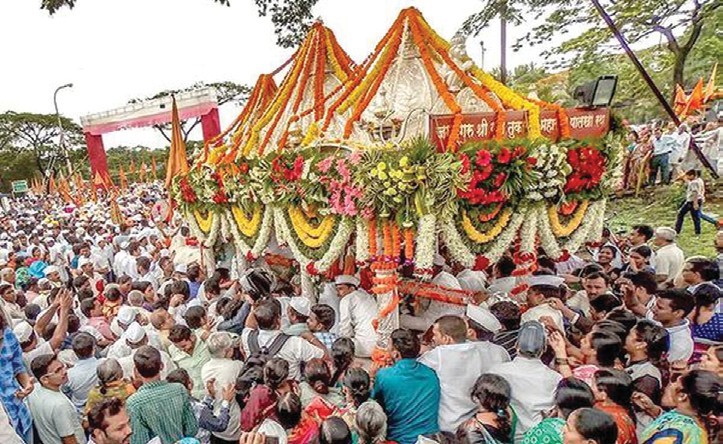Hinduism or Sanatan Dharma is the oldest religion in the world and it originated in India. Its existence predates any recorded history and has no human founder. Even Vedic records dating back as long as 6,000 to 10,000 years reveal that, at the time, Hinduism was considered an ancient religion. With a religion that old spread across the world, the diversity and complexity of how it manifests within its followers is beyond comparison.
The Vedas are the foundational scriptures to all branches of Hinduism. Devotees worship in different modes – some are ardent followers and highly ritualistic, for others it’s a personal affair and restricted to worshipping at home, then there are those who attend mass congregations and religious gatherings such as the Kumbh Mela, while a few are at peace with visiting shrines and temples.
Source of Hindu customs
Customs are the principal source for the development of the Hindu Law. Even among Hindus, customs differ from one family to another, one geographical area to the next, one community to another and from one congregation to other. And, customs do not remain the same too; they keep changing and evolving over time, absorbing and incorporating new influences that exist at the time. In Hinduism, the highest of all ‘dharma’ is ‘achara’ or conduct of a person.
A custom, in common parlance, is an act or behaviour which is repetitive or is traditionally accepted or can also be defined as a habitual practice that a person or a community is uniformly following for a long period of time. Customs can be defined as ‘Rule of Conduct’.
Customs are primarily of four types as follows – Local Customs, General Customs, Family Customs, Class or Caste Customs. Local customs or practices are practised by people belonging to a particular geographical area or region. These customs have similarities with the culture of the region or the zone owing to proximity and geographical isolation.
General customs are practices that are prevalent in a country as a whole. Here, the common factor is the country and these customs surpass other barriers such as that of religion, language, caste, etc. These customs are unique to a country and integral to a country’s cultural fabric.
Family customs, as the name suggests, are those that are practised within a family as part of a family tradition. These are followed over a long period of time, originating from their ancestors at some point in the family lineage.
Customs followed by a class or caste are those for a particular caste or sector or class of people. These may include those practised by a certain caste or those followed by a community such as traders, farmers, labourers, jewellers, etc.
Codification of Hindu customs
It was the Hindu customs that were the first to be codified in India. Ancient sources of Hindu law include shruti, smriti, customs and usages. Modern sources include judgements and precedents, legislation, etc. Of all these, customs and usages are considered the most important and the foremost sources of Hindu law.
Section 3 of Hindu Marriage Act, 1955 defines custom as a ‘rule which is followed for a long time and has obtained the force of law among people of the Hindu community’. It also stated that custom must be ancient, must be reasonable, and it should not be in derogation to the laws of the country.
Under the codified Hindu Law, the words “custom” and “usage” are defined to suggest any rule which, having been continuously and uniformly observed for a long time, has obtained the force of law among Hindus ‘in any local range, tribe, community, group or family’.
It’s expressly provided by all the four major enactments of Hindu law (namely, the Hindu Marriage Act 1955, the Hindu Succession Act 1956, the Hindu Adoptions and Maintenance Act 1956 and thus the Hindu Minority and Guardianship Act 1956) that, unless otherwise so provided expressly in any of these enactments, any custom or usage effective immediately before the commencement of the respective enactments is to cease to possess effect with regard to any matter that a provision has been made within the said Acts.
Section 29 (2) of the Hindu Marriage Act 1955, which lays down that nothing there in the Act is to be deemed to affect any right recognised by custom to urge the dissolution of a Hindu marriage, solemnised either before or after the commencement of the Hindu Marriage Act.
Manu Smriti moderates conduct
Manu Smriti or Manava-Dharmasastra or Laws of Manu, is one of the many legal texts and constitution, among the many Dharmasastras of Hinduism. It’s a Hindu scripture authored by an ascetic named Manu. Serving as a foundational work on Hindu law and jurisprudence in ancient India for at least at least 1,500 years, Manusmriti was a standard reference for adjudicating civil and criminal cases by both the rulers who patronised Vedic faith and the people who practiced Hinduism.
According to Manu Smriti, if the custom is proved, it will overpower and prevail over written text or laws. It projects an ideal society and ideal human conduct as the basis to establish an orderly society. The scripture further states how to promote these ideals by proposing law to govern all aspects of human life, as closely and minutely as possible.
It also proposes how an individual should conduct according to his or her duties, responsibilities and social class, to ensure discipline and to offer a framework to enforce lawful conduct for maintaining order in society. It further details the conduct of the ruler as well.
According to Manu Smriti, the power to enforce the laws is carefully distributed among the rulers and those who assist him in decision making. It recognises how power can corrupt the mind and influence fair decision-making. So, it cautions the king to exercise any judgment with great care.
Women rights and customs
With the codification of the Hindu law, many customs that existed earlier were abolished, such as the sati system. With the codification of Hindu law and the enactment of the Hindu Succession Act 1956, equal rights were given to both sons and daughters in matters of succession.
Custom under Hindu Marriage Act 1955 has been used in three situations. Firstly, the marriages can be solicited as per the customary tradition which is followed by the party. Secondly, divorce can be obtained by parties on the prevailing custom and usages. Thirdly, adoption can be done as per the customary rules.
As per various commentaries, Stridhan includes gifts which a woman received from her father, mother, brother, gifts or property which a woman has expressly accepted, the property which she has obtained through partition or sale, etc.
Before the Hindu law was codified, stridhan and women’s estate were distinguished from each other. After the codification, all the property which a Hindu female acquired before the commencement of the act or even subsequent, she will be the absolute owner of such property and the difference was wiped off between the stridhan and women’s estate after the codification of the Hindu Law.


 The annual Kumbh Mela is held at Prayag Triveni Sangam
The annual Kumbh Mela is held at Prayag Triveni Sangam